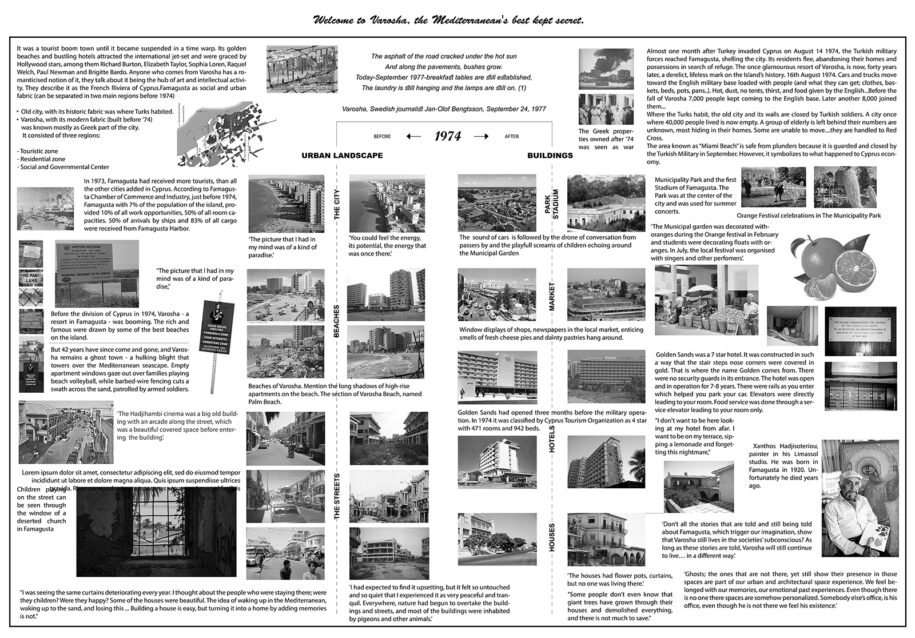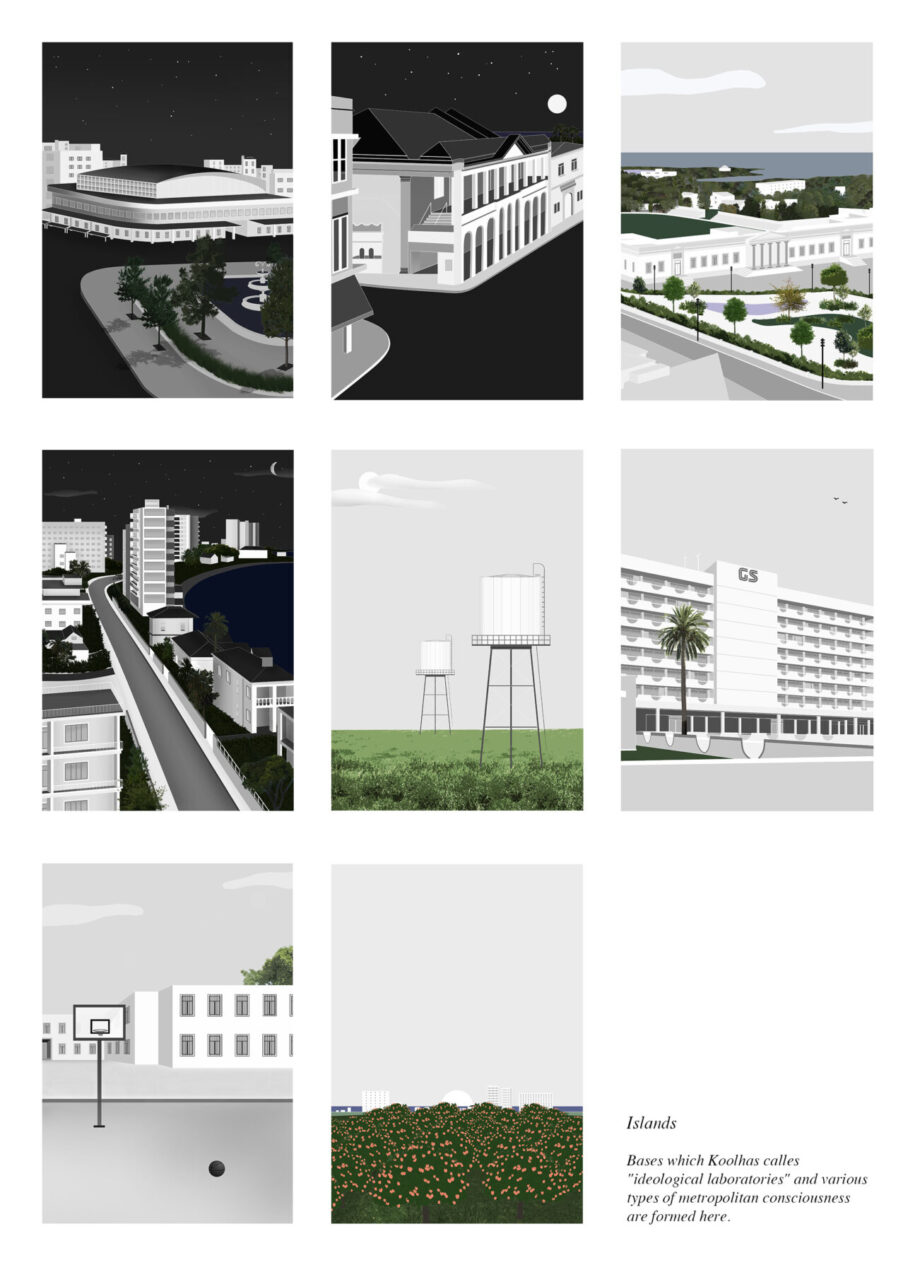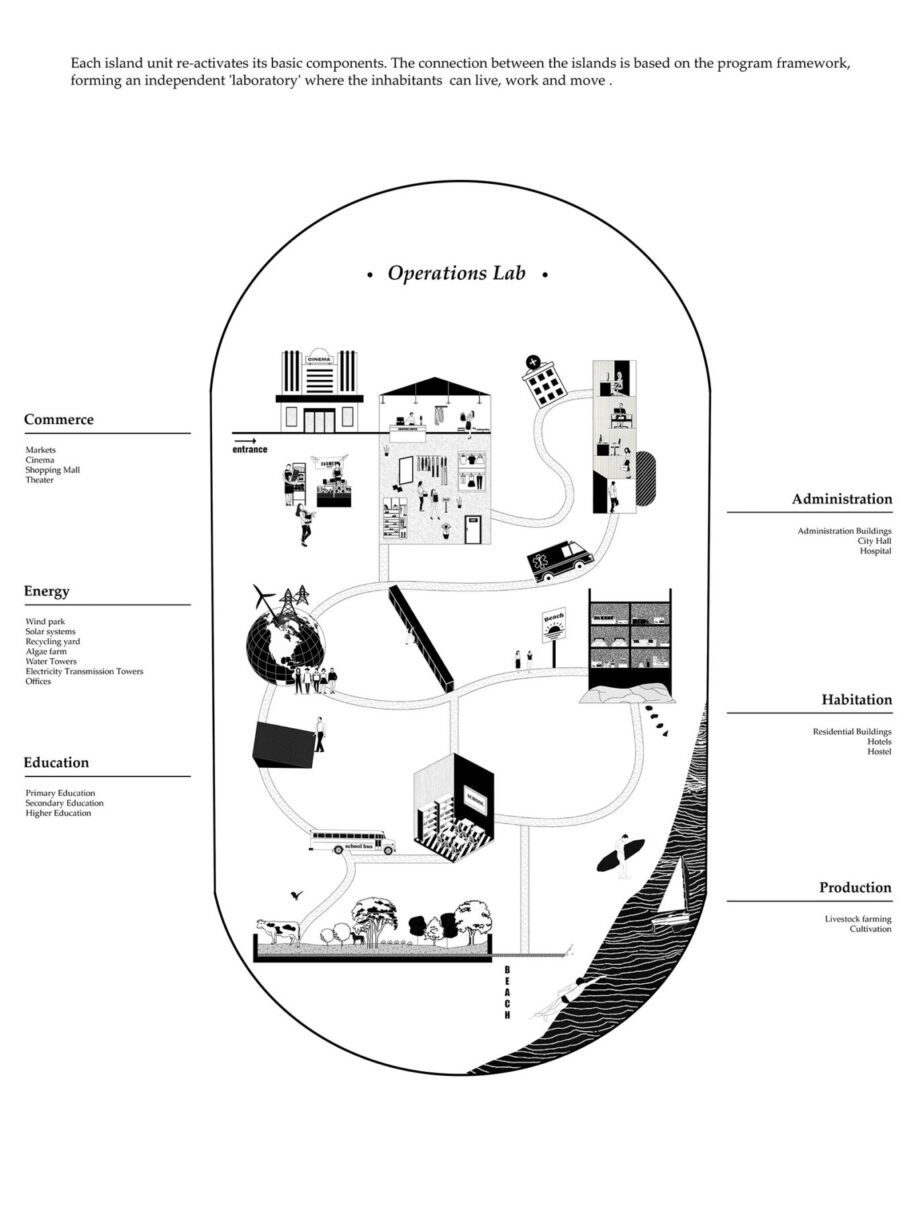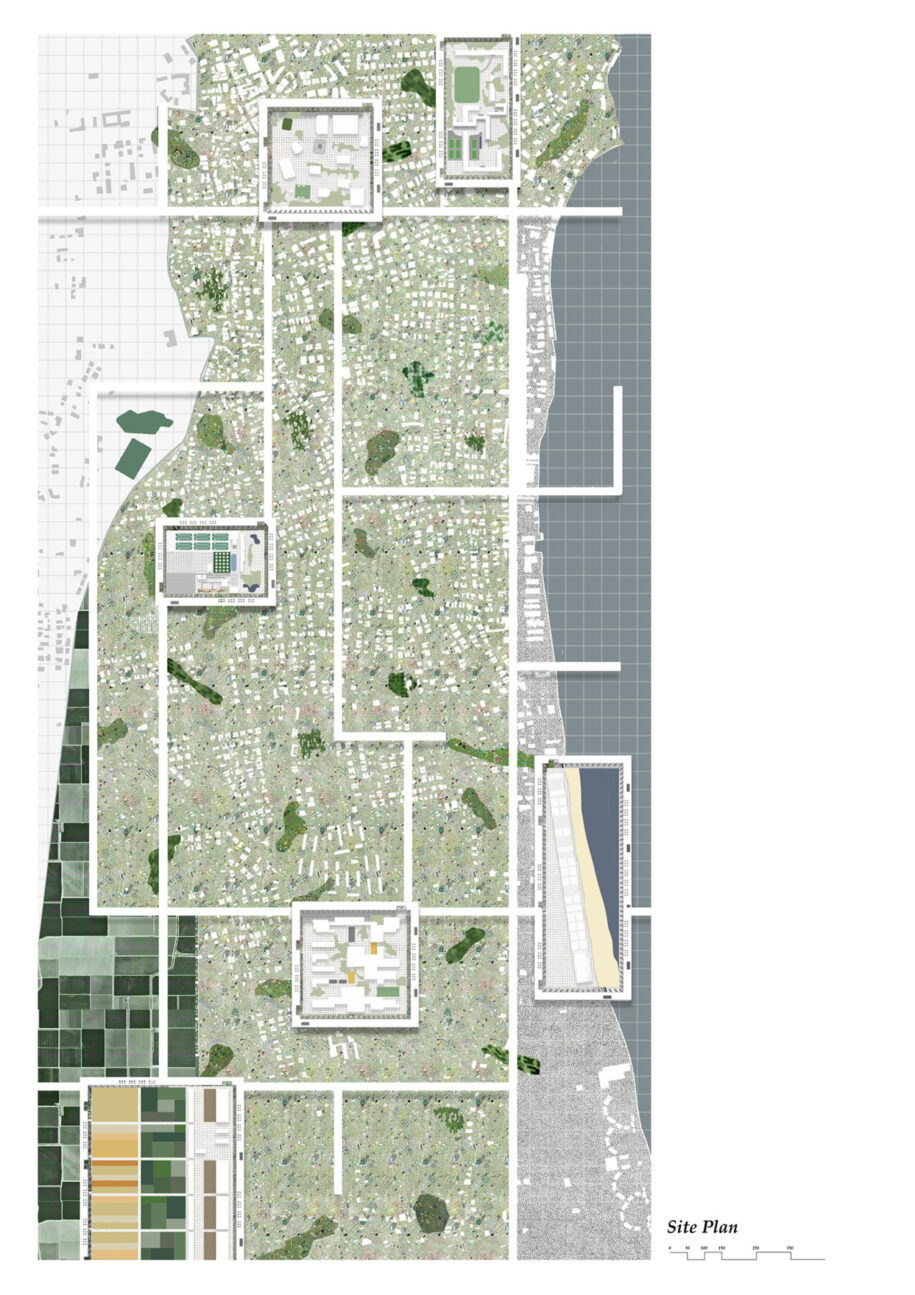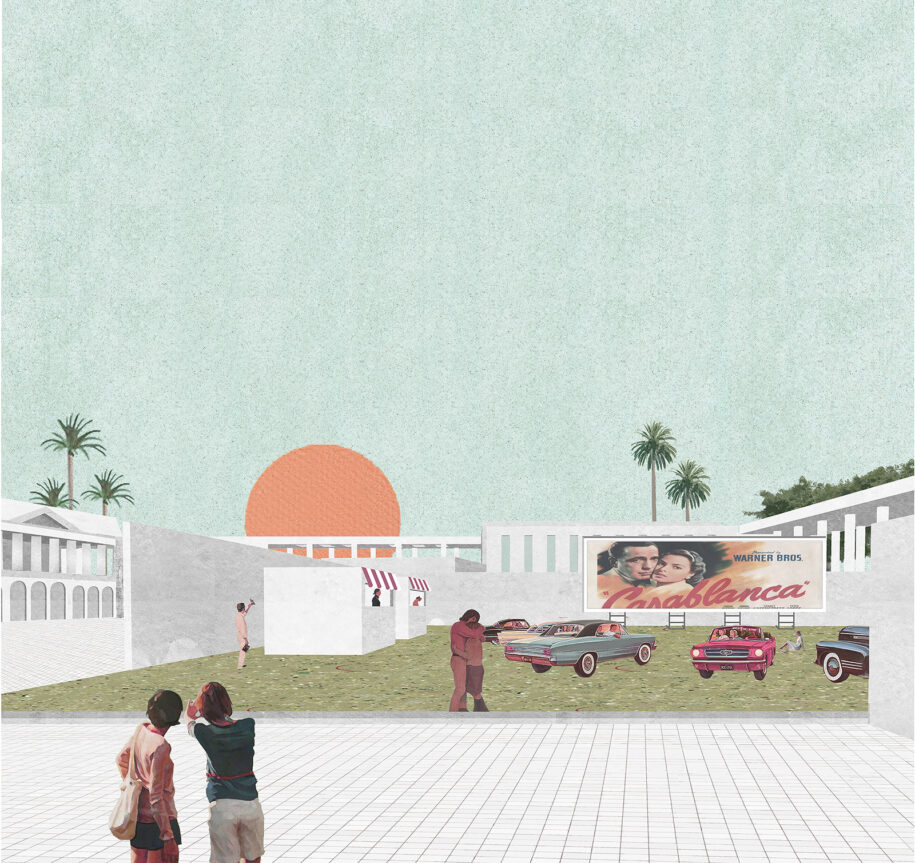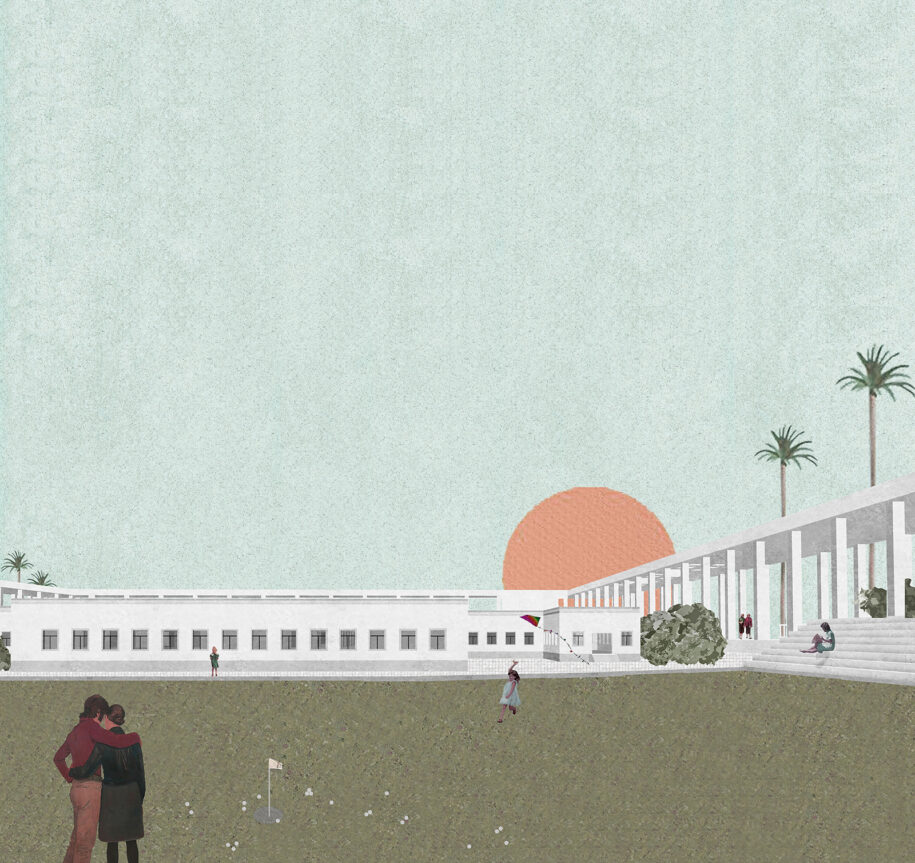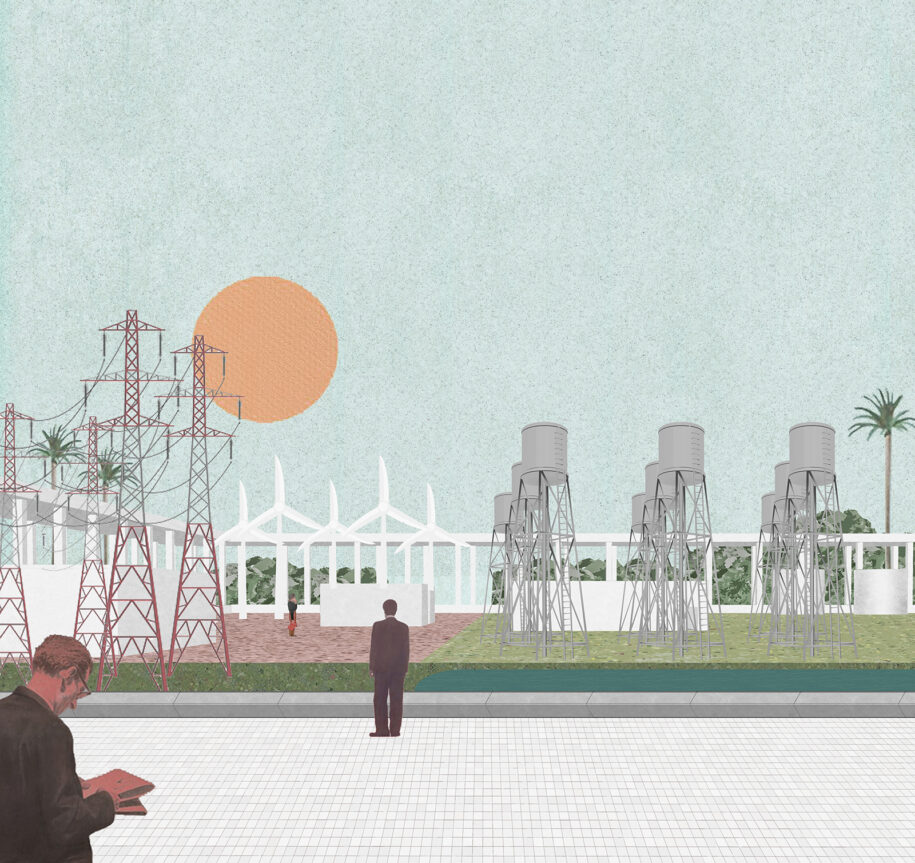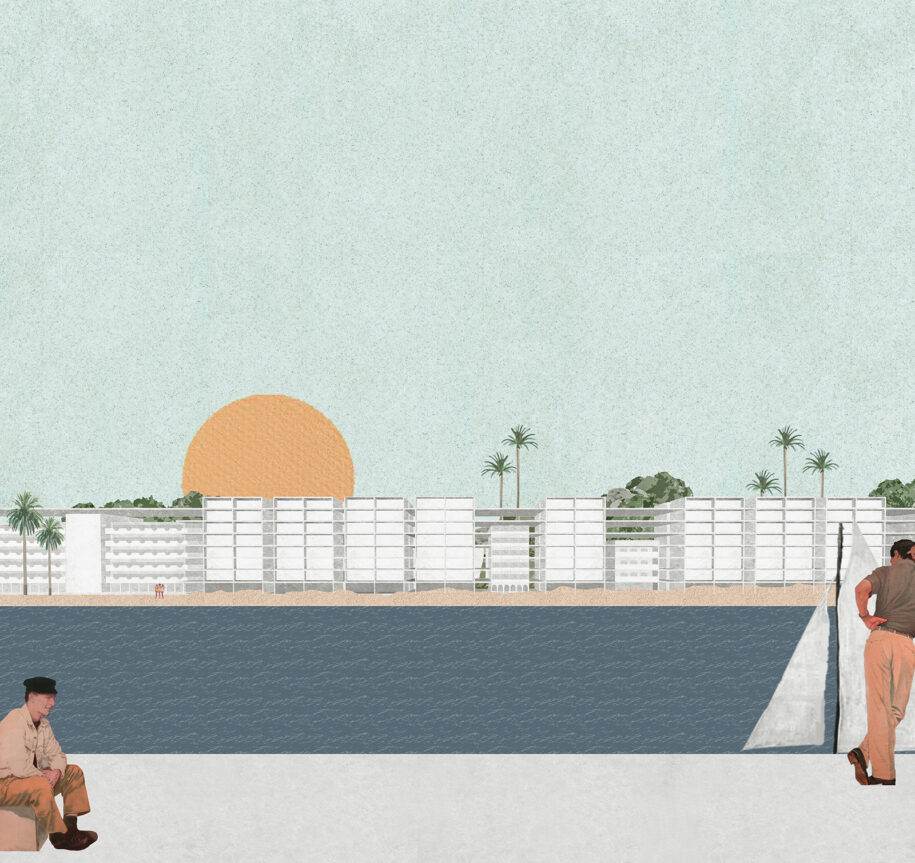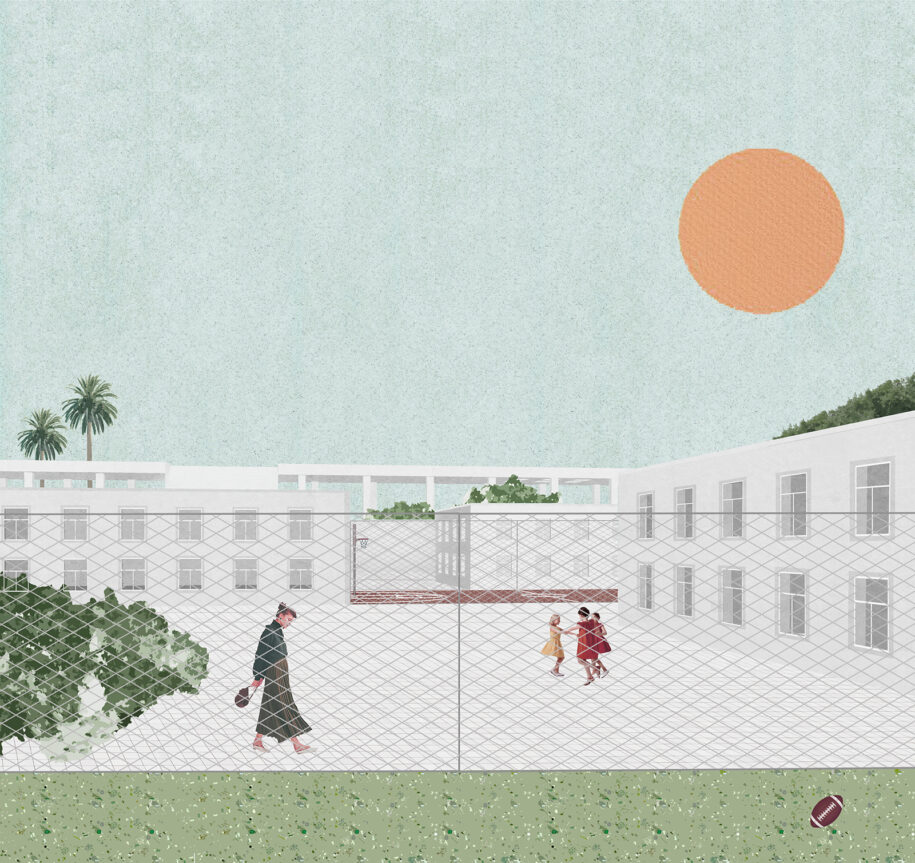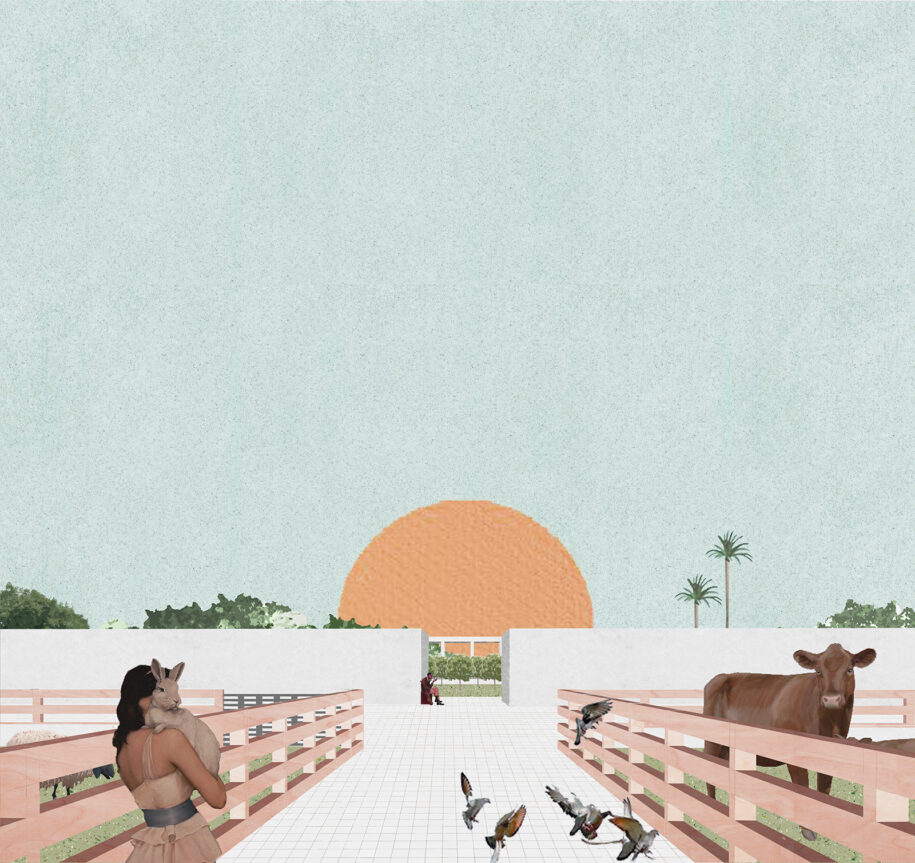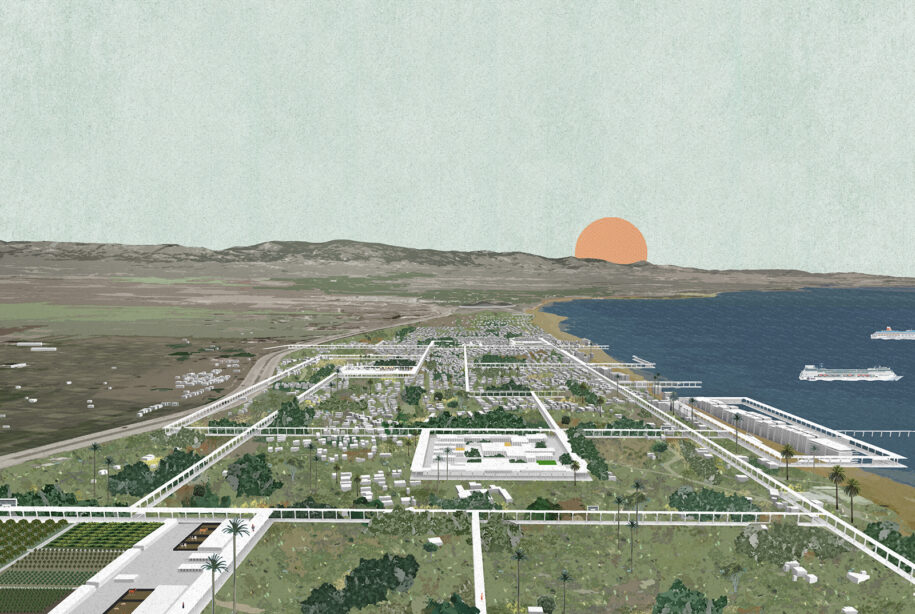Diploma thesis by Georgia Maria Drakou, entitled “Islands of Urbanities: the case of Varosha”, refers to the idea of the city as an archipelago but also as an independent and autonomous inhabitable cell.
-text by the author
The proposal aims to create a new urban condition which consists mainly of the synthesis of two factors, the open and the enclosed. The city is now an urban system that operates under four basic processes. Grid, being the first element that indicates the new urban reality. The second process is urbanization, in which, things and events have a form, a limit and an existence and everything is pushed toward an endless repetition.
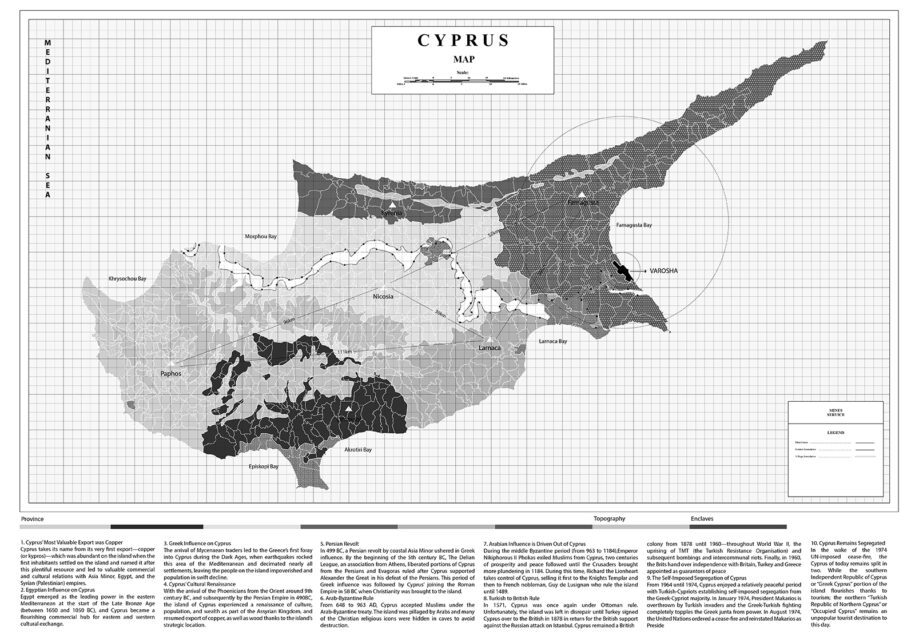
These two processes turn the city into an alloy of nature and ruin, or otherwise into a sea of memory.
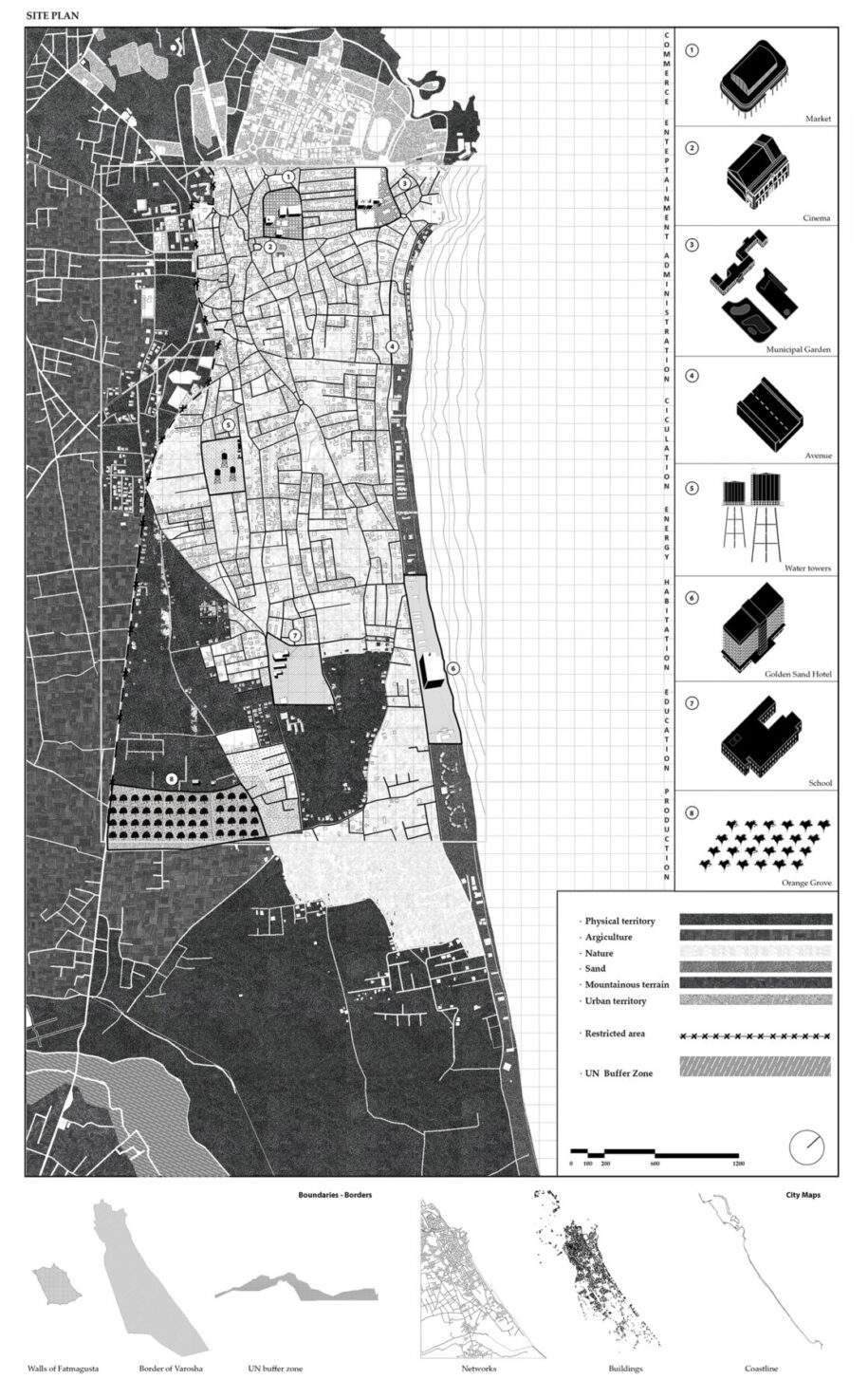
According to Pier Vittorio Aureli, the archipelago refers to a specific architectural form that is a counterform within and against the totality of urbanization. Subsequently, the centers of this system are the bases of interest, in other words, the islands of this urban archipelago complete the concept of autonomy. These states of exception compose the city’s machinery and every one of them consist a self – sufficient enclave that by retaining its function can host any ideology without affecting the general principal of urbanization. Each island adopts its function according to the previous urban status, and all together compose a new urban reality.
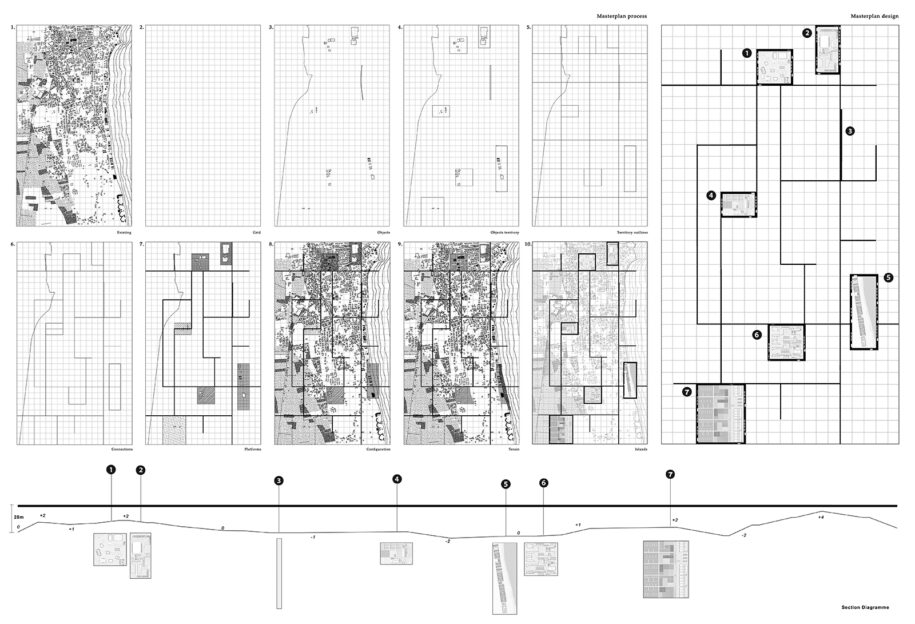
Finally, the form of the city can be defined as the experience of the limit, as the relationship between the inside and the outside.
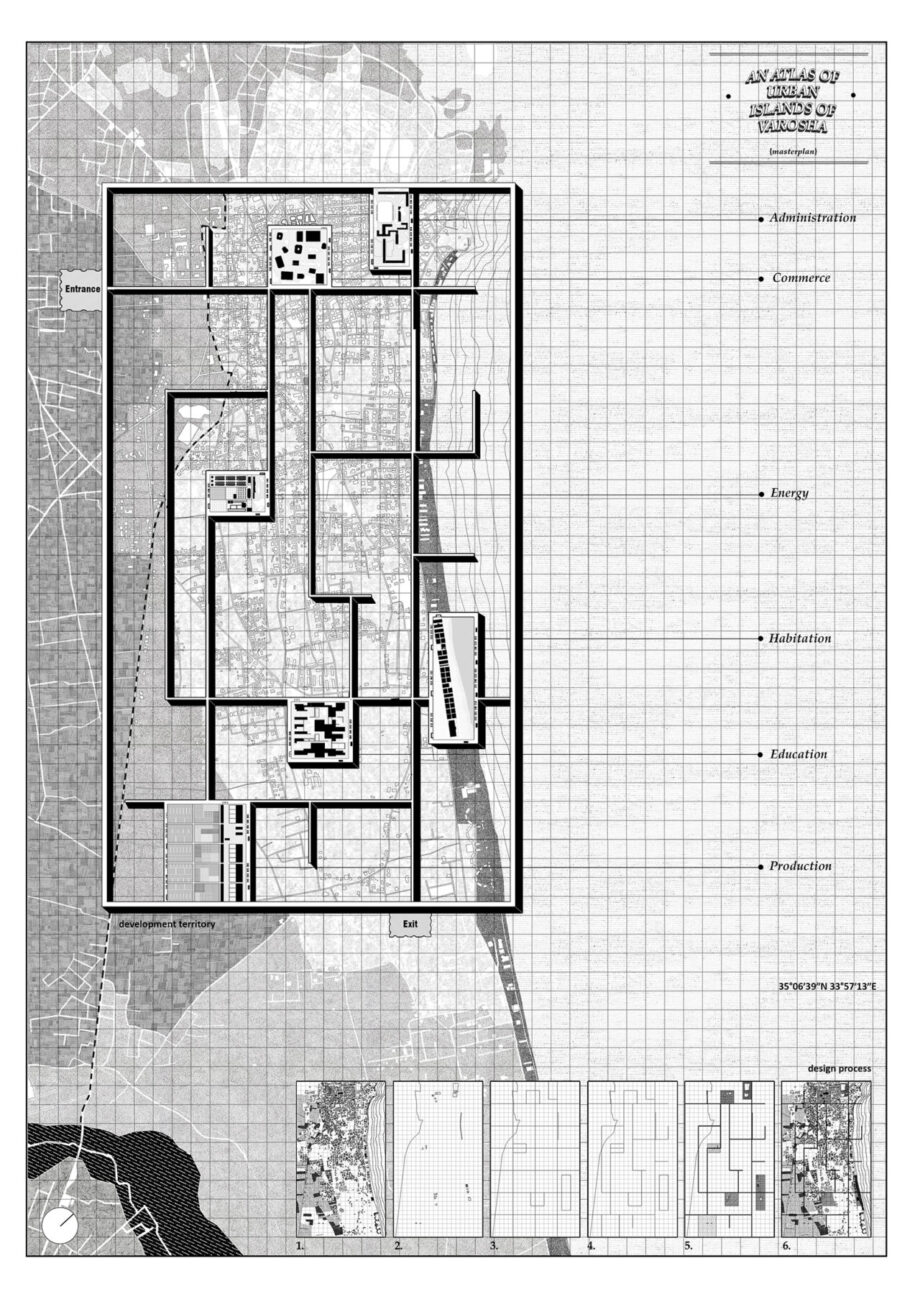
The element of the limit or the “wall” is the last process as it clearly sets the absolute architecture of the city. The form of the archipelago presupposes that its parts, even in their absolute separation, are moved by an absent center which is the locus of confrontation among the islands. The limits are both what attract the islands toward each other and what separates them. So if one were to summarize life in a city, it would have to be a continuous movement through spaces defined by walls.
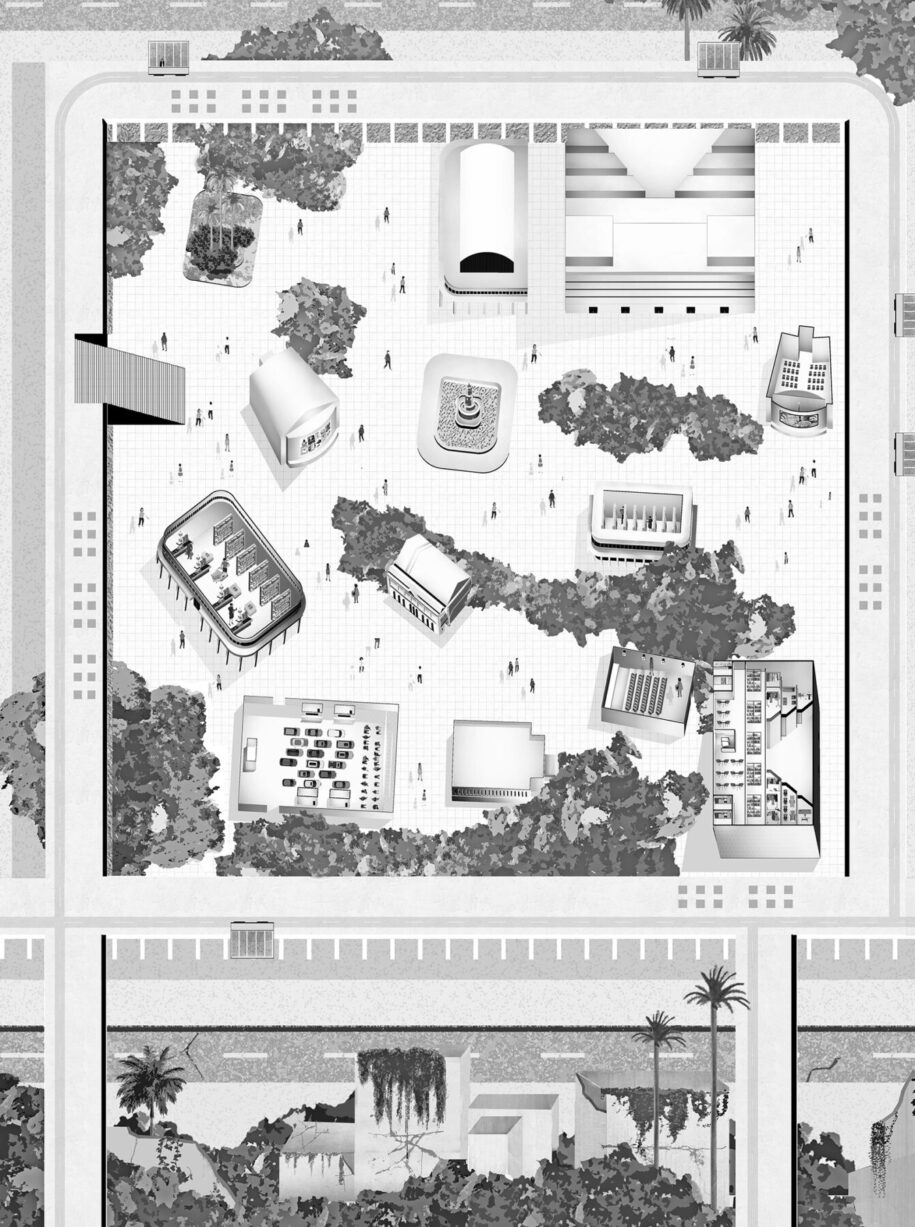
We cannot return to a preurban word but living in the present urban situation, the city maybe will end up a site of confrontation and thus of coexistence.
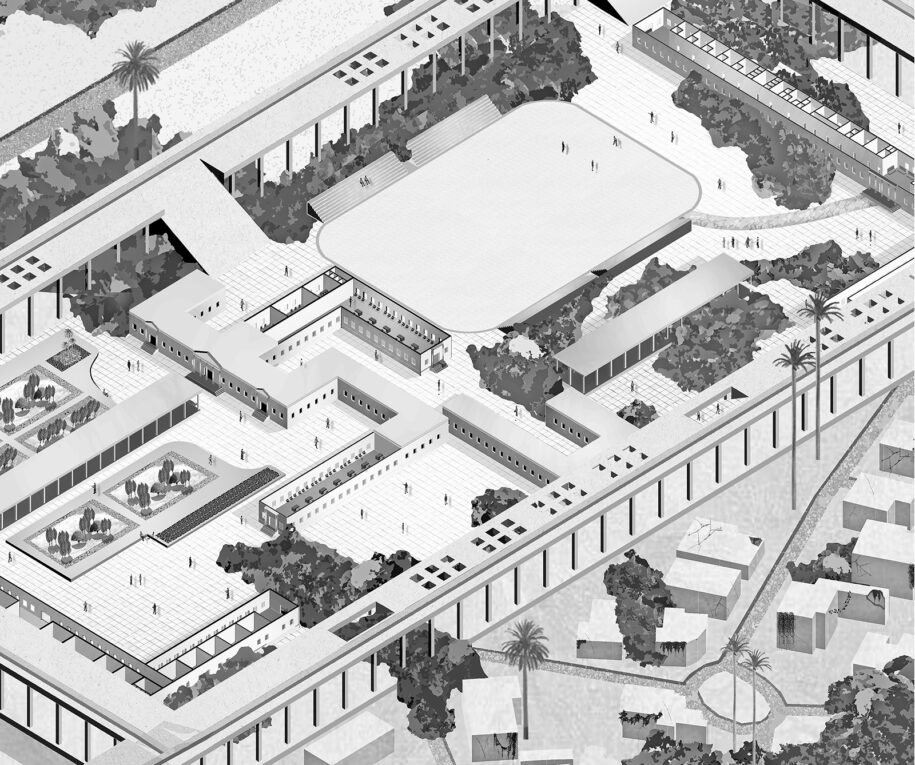
Design Strategy: First, a chronological and design recording of the wider existing urban, natural and socio-political landscape was made. Then, the area of interest was identified, studied and recorded in its current situation. Afterward, the translation of the landscape and the composition of the idea based on the data began and a new urban geography of the city was created. Separating the points of interest as different processes, (1. Commerce-Entertainment, 2. Administration, 3. Traffic, 4. Energy, 5. Education and 6. Production) the similar independent islands were formed.
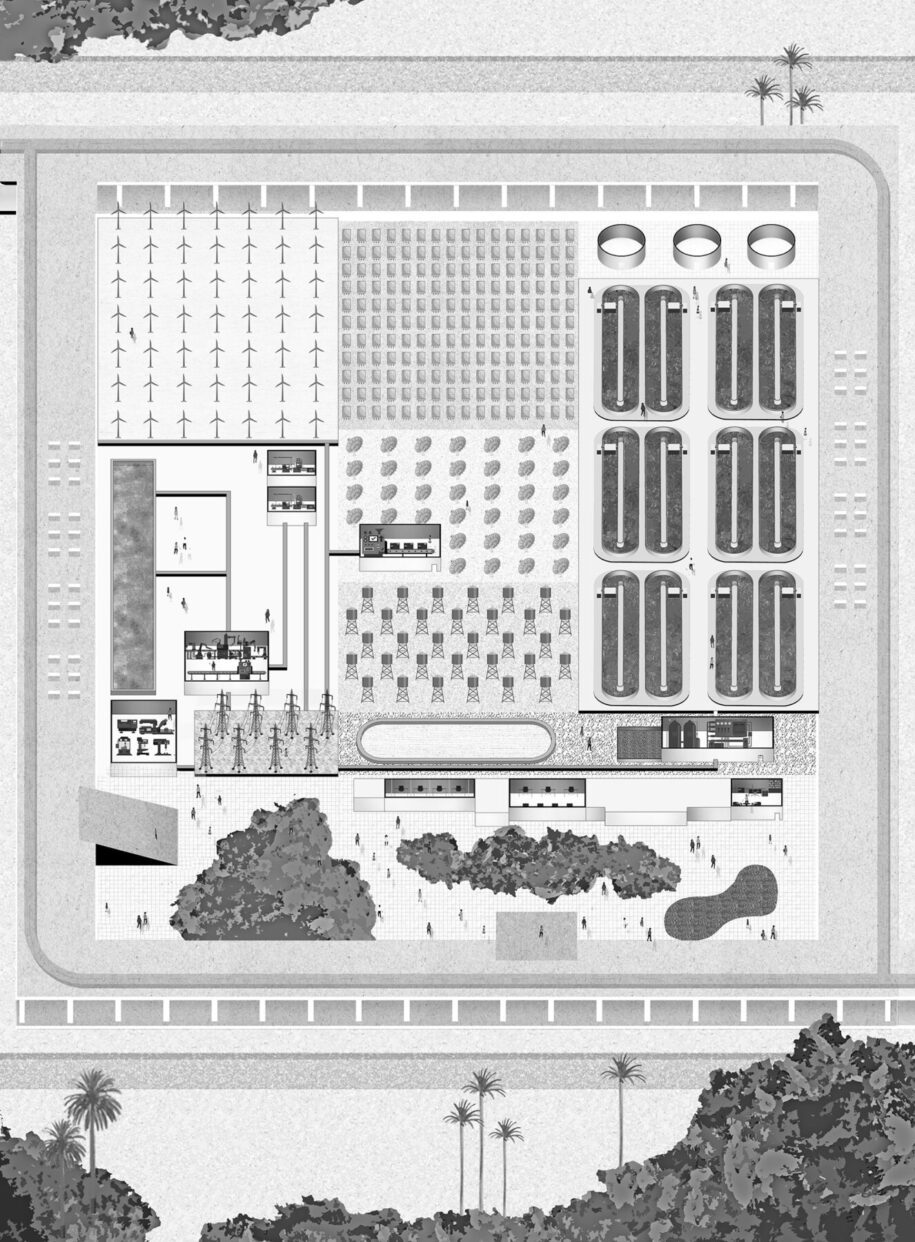
In the next stage, the islands were redesigned, however they retained some of their original elements in order to preserve the memory and the image of the past. Then, among the islands, the idea of urbanization evolves as an ocean of objects, nature, ruins and memories, which creates the ground of the new urban condition. Finally, taking as a basis the enclosed character of the existing city, the idea of the wall is reproduced, and adopts beyond the limit and the idea of connection and traffic.
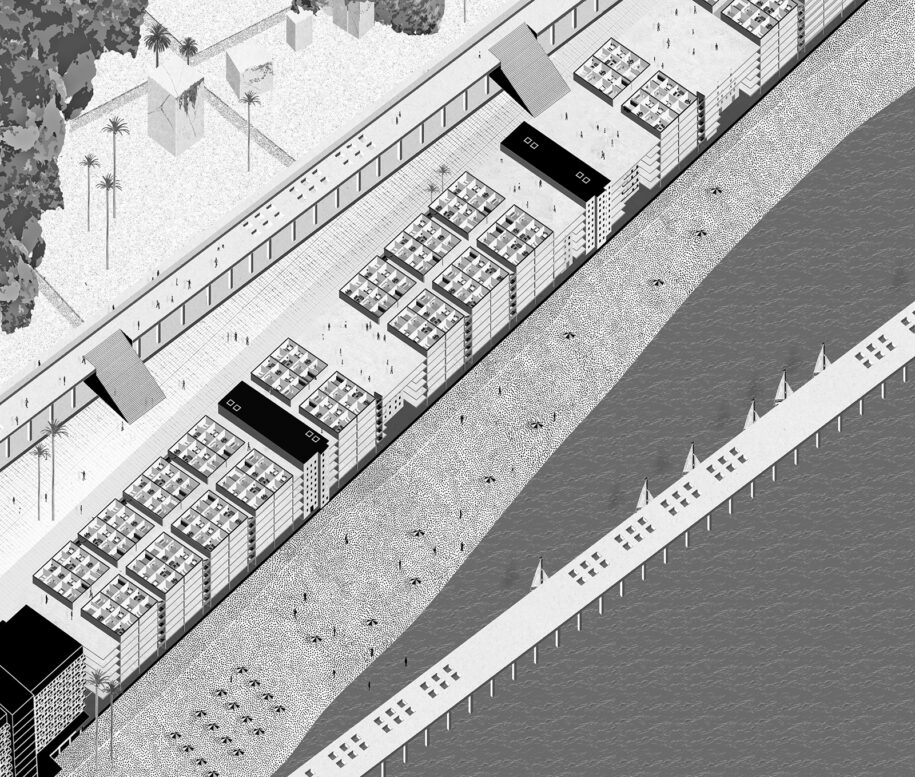
Facts & Credits
Project title Islands of Urbanities: the case of Varosha
Student Georgia Maria Drakou
Supervisor Yiannis Aesopos
Date July 2020
Course Diploma thesis
Institution School of Architecture, University of Patras
Η διπλωματική εργασία της Γεωργίας Μαρίας Δράκου, με τίτλο “Islands of Urbanities: the case of Varosha”, αποτελεί μια αστική μελέτη που αντιμετωπίζει την πόλη ως αρχιπέλαγο και έχει ως στόχο την ριζική αποκέντρωσή της υπό τη μορφή οικισμών-νησίδων που βυθίζονται στο αστικό τοπίο το οποίο εξυπηρετείται από τα δίκτια-πλατφόρμες που τα περιβάλλει.
-κείμενο από την δημιουργό
Σύμφωνα με την θεωρητική ανάλυση της πόλης ως αρχιπέλαγος αλλά και ως ένα αυτοτελές και αυτόνομο κατοικήσιμο κύτταρο, η πρόταση αναφέρεται στην δημιουργία μιας νέας αστικής κατάστασης η οποία αποτελείται κυρίως από την σύνθεση δύο παραγόντων, το ανοικτό και το περίκλειστο.
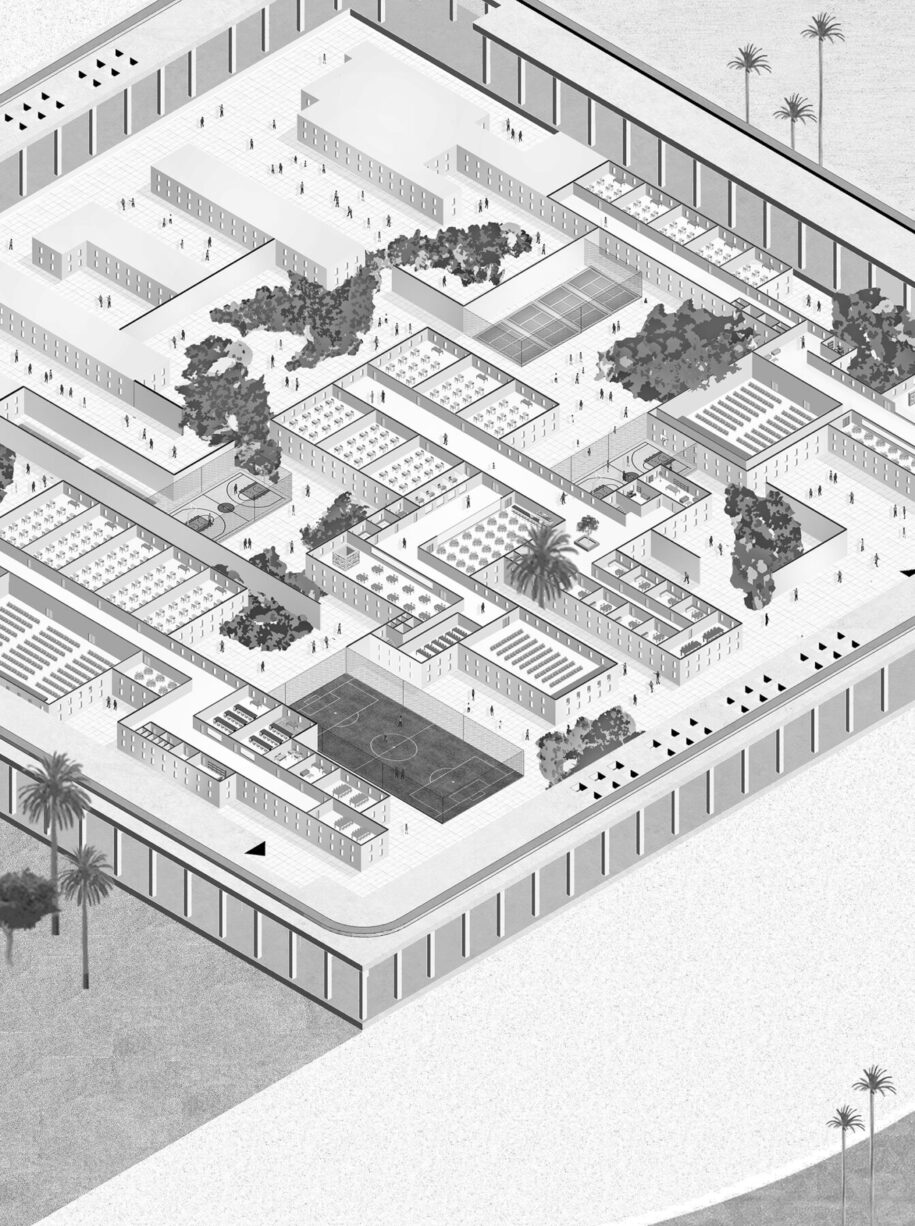
Με άλλα λόγια, η λογική του έργου υπονοεί ότι όσο περισσότερο τα νησιά ενισχύουν τη λογική της πόλης, τόσο περισσότερο η “θάλασσα” αναπτύσσεται ως ένα μείγμα διαφορετικών στοιχείων.
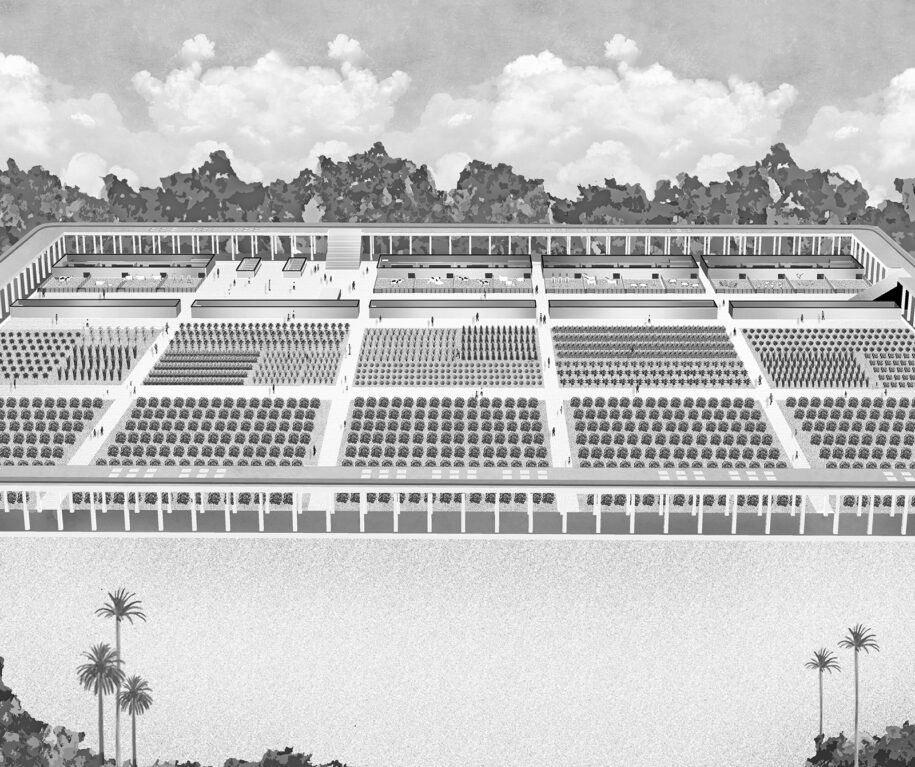
Η επιλογή αυτών των “νησιωτικών ζωνών” της πόλης ήταν κρίσιμη. Κάθε νησίδα ήταν η ενσάρκωση μιας διαφορετικής ιδέας της πόλης. Αυτή η διαδικασία σύμπραξης παρέχει ένα μέσο για τον ορισμό των τμημάτων ενώ η φόρμα είναι η δυνατότητα συσχέτισης μεταξύ των υπαρχουσών καταστάσεων και των αναφορών της πόλης. Τελικά, η νέα αστική μορφή δεν είναι μια συγκεκριμένη εικόνα της πόλης, αλλά η δυνατότητα του σχηματισμού στιγμών με βάση αρχιτεκτονικών πρωτοτύπων.
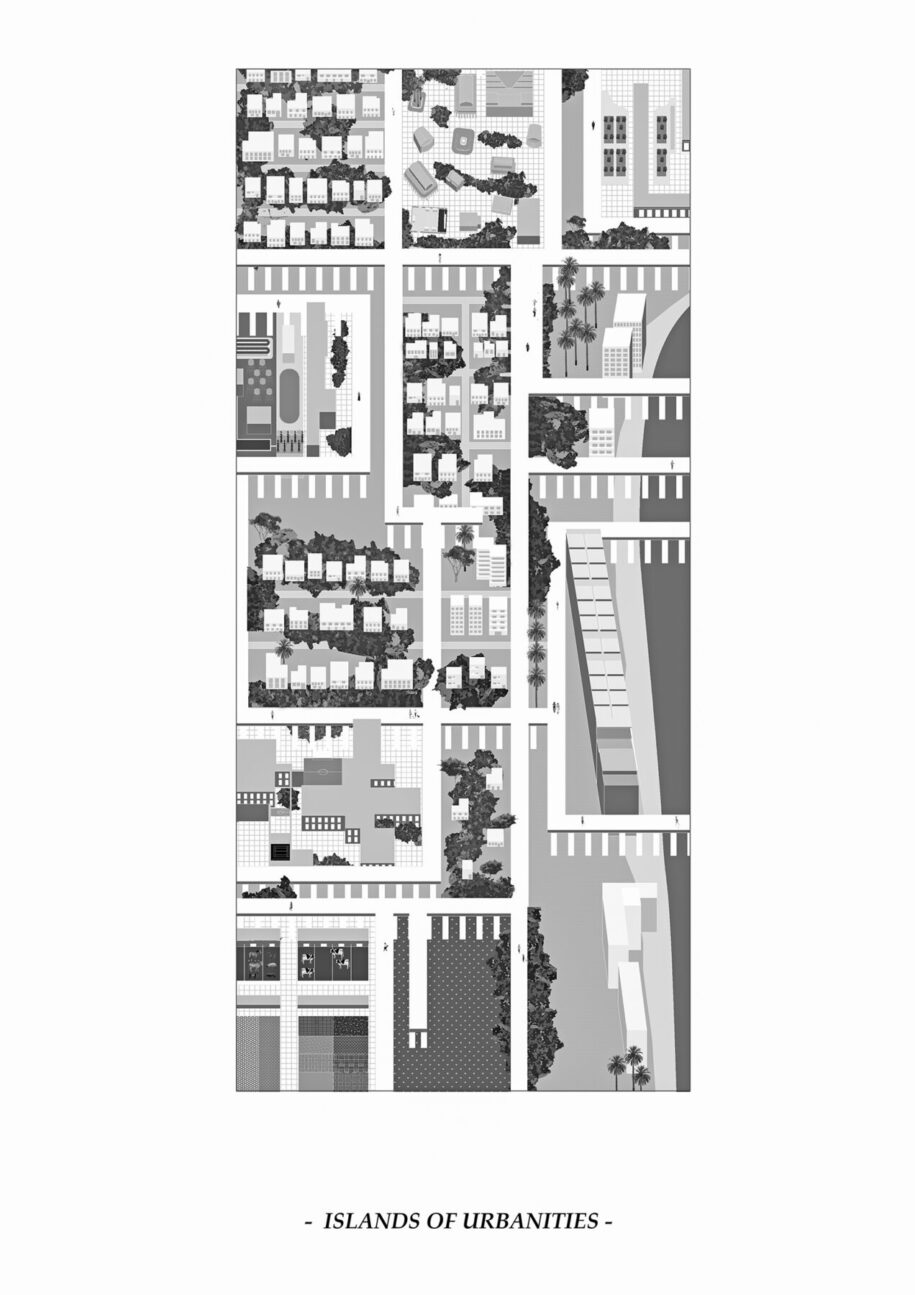
Η προσέγγιση αυτή καταλήγει σε ένα μνημειακό συγκρότημα που αναπτύσσεται ως εδαφικό αρχιπέλαγος και στο οποίο ριζικά διαφορετικά αντικείμενα συγχωνεύονται σκηνοθετώντας ένα νέο υβριδικό τοπίο, με την αρχιτεκτονική να μην είναι μόνο ένα αντικείμενο, αλλά η διαδικασία με την οποία επιβιώνει τελικά όλη η ιδέα της πόλης.
Στοιχεία έργου
Τίτλος έργου Islands of Urbanities: the case of Varosha
Φοιτήτρια Γεωργία Μαρία Δράκου
Επιβλέπων καθηγητής Γιάννης Αίσωπος
Εξεταστική περίοδος Ιούλιος 2020
Μάθημα Διπλωματική εργασία
Σχολή Τμήμα Αρχιτεκτόνων Μηχανικών, Πανεπιστήμιο Πατρών
READ ALSO: Biomimicry In Architecture – Examples Of Sustainable Design | Research thesis by Evangelia Gioti & Athina Toutziari
